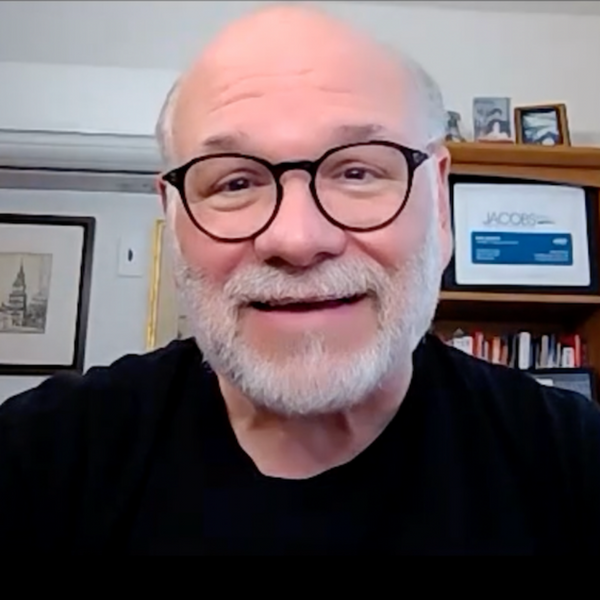Talking With Weber Shandwick’s Gail Heimann About Inspiring PR Innovation
By Ken Jacobs
March 2020
For Weber Shandwick’s Gail Heimann, there isn't a single, correct way to lead successfully.
“Much is said and written about leadership,” said Heimann, who served as her firm’s president since 2013 prior to the promotion to CEO last July. “No matter what books you read or pundits you listen to, it’s up to you as the leader to set the vision, bring the right talent together to achieve it, empower colleagues, communicate openly about progress, and keep learning along the way.”
Heimann spoke with me about her reputation as a leader and how she hopes to improve her firm’s diversity-and-inclusion practices.
You’re one of only four women currently serving as CEOs of global PR agencies. What leadership approaches got you there?
When it comes to the tenets that got me here, I tend not to look in the mirror but to look around me, every day — to be fanatically open to diverse opinions and points of view, to what’s new and emerging, to the swirl of mind-bending innovation and tough issues and roiling geopolitics and endlessly inspiring creative and artistic expression and everything else. I don’t think you can guide any business to greatness if you are not in the world beyond your office.
I have tried to lead by:
• Listening deeply to our clients and teams and those I respect in and beyond the industry.
• Setting an example. I continue to believe that leaders should model the behavior they seek. While no one can do everything in a world that requires increasingly specialized knowledge and know-how, the onus is on leadership to demonstrate intellectual curiosity, flexibility and agility we look for in our teams.
• Remembering that we are human first. There are a lot of spreadsheets in the leadership world. One has to “get” them and manage operations diligently to deliver for the business.
However, we must also remember that people are the heart of what we do: how we treat, inspire, enthuse and develop them so they share our commitment to our craft and passionate belief in its importance. At the same time, see the path to personal growth and satisfaction they have within our firm as the way to spreadsheet nirvana.
You’ve earned a reputation as a leader who concentrates on ideas and innovation. As a profession, how can we do the same?
We have a tendency — as humans and as an industry — to gravitate toward the shiniest new things. And there are so many to choose from.
I think we need to remember that the epicenter of the evolving ecosystems we have built to deliver optimal impact for our clients is “the idea.” There are lots of tech-driven ways to get to the right idea — data-driven insights beget clear strategies. Extraordinary new technologies and emerging platforms help us engage with the right stakeholders in the right places at the right times. There are new and always-evolving methodologies for measuring impact and predicting what’s to come.
But none of it delivers without the idea at the center. As you might expect, I believe fervently that the idea at the center must be one that has the power to earn attention.
So what can the profession do? Honor our earned-idea heritage while embracing the best of the innovation that’s out there in ways that optimize outcomes for our clients. Every day.
How can individual communications practitioners and leaders enhance their ability to develop innovative ideas?
There are a few things: One is a full-on immersion in all things that expand our intellectual horizons and raise our consciousness. Don’t take a back seat to what’s going on in the world. Stay in the “swirl.”
We also need to listen to our clients and colleagues. It’s easy to get trapped in our to-do lists — and I’m not saying I don’t — but I think we have to make time to listen to people we might not ordinarily interact with and, most important, to use what we learn to chart a path forward for our organizations and ourselves.
Our profession has made strides in diversity, as evidenced by your global CEO position. But many feel that we still have far to go. How can public relations become more diverse?
We must commit to action. Yes, we’ve made a little progress in the last few years, but the stats are incompatible with a profession that demands diversity to thrive — for both moral and business reasons. I think we need to work much harder to ensure that we have, retain and attract as much diversity in our ranks as we have conversations about diversity in our ranks. The latter surely eclipses the former.
The action: We have to hold our leaders accountable for creating inclusive workplaces where everybody feels that they belong. We must enforce accountability for recruiting approaches that make diversity happen, such as diverse slates for key roles. We also have to apply the powerful creative skills that we deploy for our clients to reinvent our company cultures so they recognize different backgrounds and experiences. We are committed to making progress this year and beyond.



